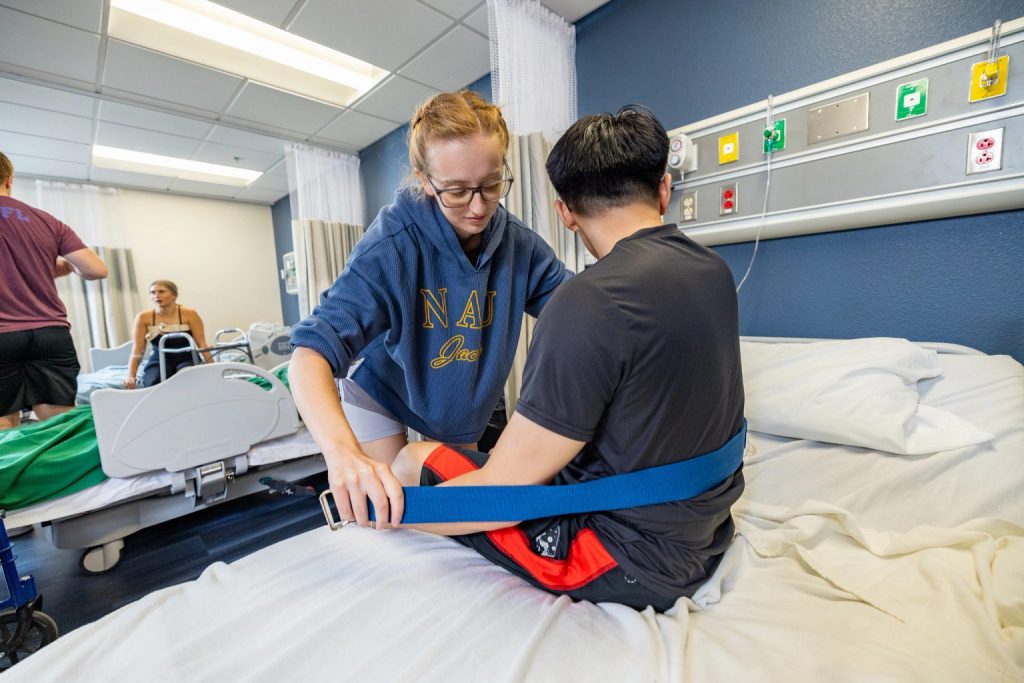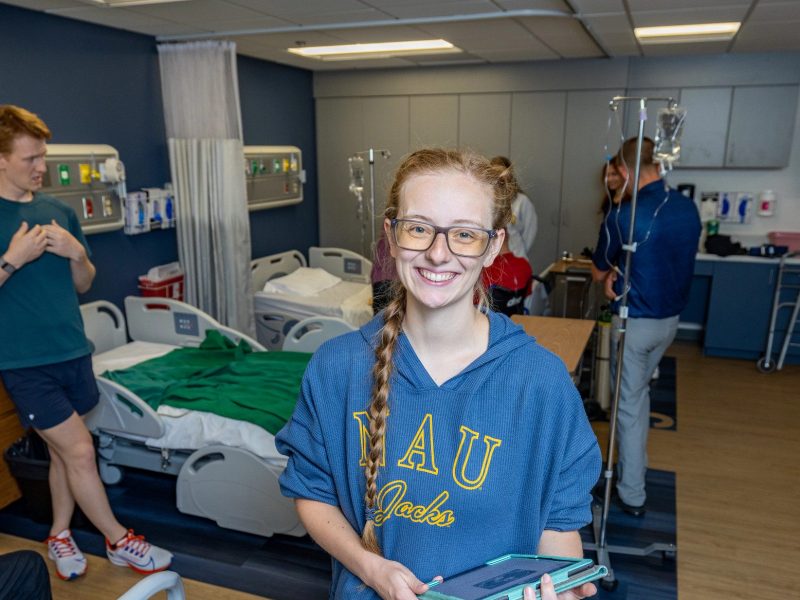Movement experts: hybrid Doctor of Physical Therapy program | NAU Stories
Sara Thomasson is on her way to becoming a physical therapist.
Critical to patient recovery, physical therapists (PTs) assist injured or ill people to improve movement or manage pain. Thomasson is part of the first cohort in NAU’s hybrid Doctor of Physical Therapy (DPT) program. From the fingers to the toes, Thomasson is gaining a deep understanding of the human body and how everything works and moves together. She is, as her professors describe it, becoming a “movement expert.”
Thomasson has always been interested in medicine and science. As an athlete in high school, she was exposed to the effectiveness of PT as her teammates recovered from injuries. Then, during undergraduate school, a little girl at her parents’ church had a stroke and wasn’t able to move the right side of her body. “I followed her story as she went through physical therapy and other therapies,” Thomasson says. “Now, you wouldn’t even know she had any problems. She plays sports, she runs. She does everything.”
To get started in PT, Thomasson moved from her hometown of Indianapolis, Indiana, to Phoenix to get a biology degree with a pre-physical therapy emphasis at Grand Canyon University. But to have a career as a PT you need a doctorate. Thomasson chose NAU’s program because of its affordability, location, and convenience. “I also just love the idea of it. We’re a competency-based education program, so we’re a little bit different than all of the other programs right now,” she says. “We’re trying to change how physical therapy is being taught to students, and that was really innovative. Also, the faculty is super incredible.”

NAU offers residential DPT programs at the Flagstaff campus and the Phoenix Bioscience Core in addition to the hybrid option. Thomasson is one of 31 students in the inaugural hybrid cohort with students from across the United States. In the hybrid model, students attend classes remotely and then gather at NAU’s Flagstaff campus at the end of the semester for several days of immersive, hands-on classes to practice what they learned online. “We practice scenarios with each other. Someone plays the patient, another plays the therapist,” she says. “We practice what we’ll be actually doing as professionals.”
While Thomasson has enjoyed the competency-based approach, she had to get used to the different teaching method. “I’ve always been taught in the traditional sense of education where you teach to a test rather than teach to learn skills.”
Flexibility in the hybrid program was key to Thomasson. She can spend time with her husband and one-year-old daughter and get hands-on experience through a therapy aide job. “I’m able to do things in my personal life, but also, I was able to continue working as a therapy aide in a hospital, so I’m able to learn in a different way,” she says. “The way that they’ve set it up has really been foundational. They help us get the skills we need for clinical practice.”
As far as what she’ll do after graduation in 2025? She’s keeping her options open and will know better after completing her clinical rotations, but she is considering pediatric PT. “I love children. I have one of my own, and they have a different kind of energy. I also think that working in a hospital is really interesting,” she explains. “But again, I don’t know exactly where I might fit because I haven’t been in my clinicals yet, so I think that’ll be valuable experience to shape where I really want to go.”
See the original article from NAU Stories.
